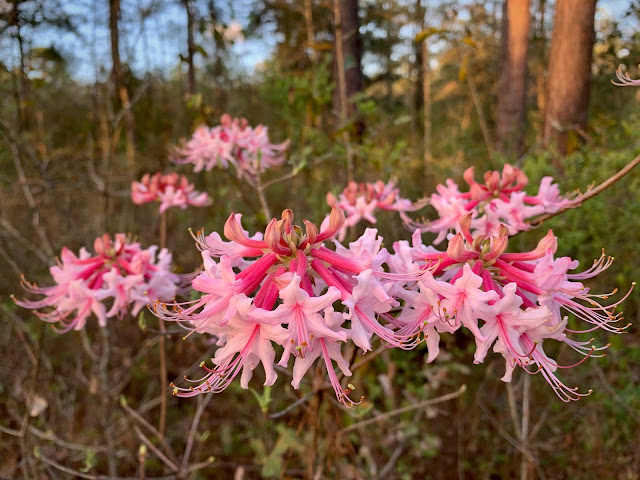Wednesday's Wildflower: Buttonbush
Buttonbush, Cephalanthus occidentalis
Submitted by Jean Evoy, a 30-year veteran of FNPS. She has been active in several chapters including Miami-Dade, Serenoa, and Mangrove.
Every spring I anxiously await the first sign of buttonbush blossoms. Buttonbush, Cephalanthus occidentalis, thrives in swamps, sloughs, marshes and along the edges of ponds and lakes throughout most of North American and the West Indies. Even though the flower heads don’t look anything like modern buttons, their pincushion-like structures make buttonbush an interesting and attractive addition to our Florida landscape.
Buttonbush is an understory shrub, or small tree with arching branches. It has attractive reddish-brown bark and opposite or whorled leaves. The intriguing globular inflorescences contain numerous bisexual, sessile, white flowers. The fragrant flowers are 4-lobed, with 4 united sepals, 4 stamens and a single pistil. The styles extend beyond the flowers. The entire inflorescences is about 3-4 centimeters in diameter.
In his book, Florida Ethnobotany, FNPS member Dan Austin noted that buttonbush was used by indigenous people to treat a variety of problems like dysentery, headaches, stomachaches, rheumatism and toothaches. However, by the late 1800s the plant had fallen out of favor, as people began to realize that some of the side effects were worse than the problem being treated. Later chemical assessments revealed that buttonbush contains toxic glucosides, volatile oils and tannins.
The fragrant buttonbush flowers attract bees, wasps, butterflies, moths, and flower beetles. Flower beetles and bees collect both pollen and nectar. During many years, buttonbush flowers are regarded as major butterfly attractors. With the extreme drought conditions this spring, the attraction of buttonbush flowers has been diminished, or perhaps fewer butterflies have been around. However, I still stop to look whenever I see a buttonbush in full bloom; often I am pleasantly surprised.
Other links:
USF Plant Atlas: Cephalanthus occidentalis
FNPS Native Plants for Your Area: Buttonbush
IRC: Common Buttonbush
Submitted by Jean Evoy, a 30-year veteran of FNPS. She has been active in several chapters including Miami-Dade, Serenoa, and Mangrove.
 |
| Dorantes skipper on buttonbush by Jean Evoy |
 |
| Buttonbush by Jean Evoy |
In his book, Florida Ethnobotany, FNPS member Dan Austin noted that buttonbush was used by indigenous people to treat a variety of problems like dysentery, headaches, stomachaches, rheumatism and toothaches. However, by the late 1800s the plant had fallen out of favor, as people began to realize that some of the side effects were worse than the problem being treated. Later chemical assessments revealed that buttonbush contains toxic glucosides, volatile oils and tannins.
 |
| Dahana moth on buttonbush by Jean Evoy |
Other links:
USF Plant Atlas: Cephalanthus occidentalis
FNPS Native Plants for Your Area: Buttonbush
IRC: Common Buttonbush



Comments